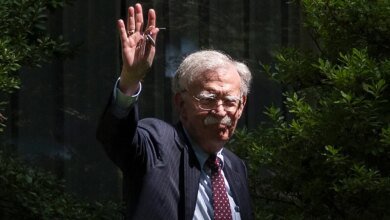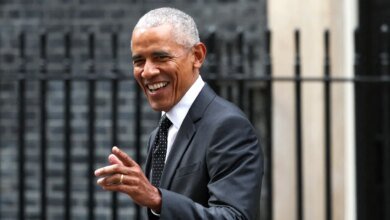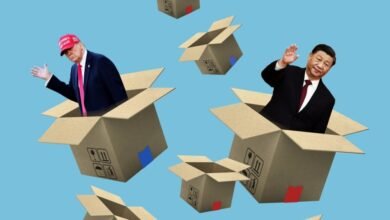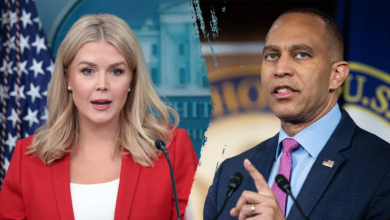Trump, Zelensky Discuss Potential Tomahawk Sale to Ukraine
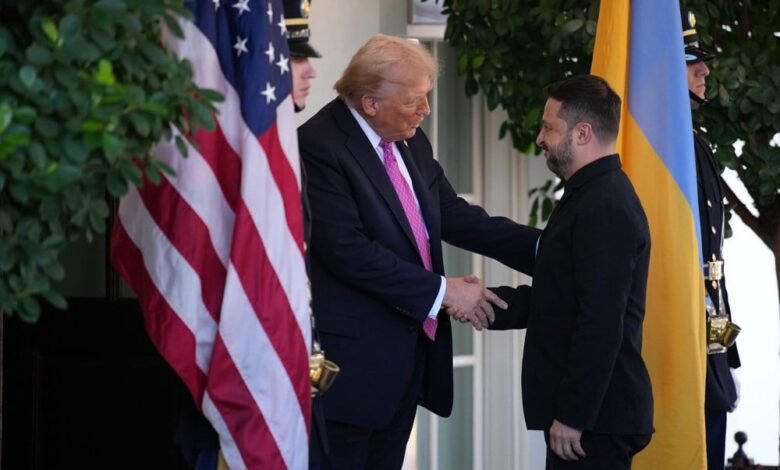
Welcome back to the Global Digest, where we look at it US President Donald TrumpMeeting with Ukrainian President Volodymyr Zelensky, MongoliaThe second prime minister ousted in just four months, and military purges China.
Seeking US Tomahawk
Hoping to build on the momentum of a US-brokered ceasefire agreement between Israel and Hamas last week, US President Donald Trump is once again turning his attention to the Russia-Ukraine war. On Friday, Trump hosted Ukrainian President Volodymyr Zelensky at the White House to discuss the next steps for achieving lasting peace in the region.
Securing more weapons was at the top of Zelensky’s agenda. In particular, Ukraine is seeking to purchase long-range Tomahawk cruise missiles from the United States. According to Zelensky, these weapons are necessary to target key military sites, energy facilities and other vital infrastructure deep within Russian territory in order to push Russian President Vladimir Putin into direct negotiations.
Initially, the White House appeared to be considering such a deal, especially after Trump and Zelensky met last month to discuss the battlefield situation. At the time, Trump declared that he believed Kiev was capable of reclaiming all of the territory occupied by Russia, a dramatic rhetorical change from his previous position that Ukraine must make territorial concessions to end the war.
But on Thursday, after Trump held a lengthy phone call with Putin, the US president appeared less enthusiastic about giving the missiles to Kiev. “We need Tomahawk missiles for the United States of America, too,” Trump said. “We have a lot of it, but we need it. I mean we can’t drain our country.” He went on to describe the Tomahawk as an “incredibly vicious, offensive and destructive weapon,” and suggested that Putin did not want the United States to give the missiles to Ukraine.
According to Russian foreign policy advisor Yuri Ushakov, Putin warned Trump that allowing Ukraine to purchase American Tomahawk missiles “will not change the situation on the battlefield but will cause great damage to the relationship between our countries.” Similar threats have worked with the US president before. Trump has repeatedly postponed imposing any new sanctions on Moscow to avoid angering the Kremlin and undermining the chance of reaching a peace agreement.
To counter Trump’s reluctance, Zelensky is expected to offer Trump several potential deals. This includes an agreement that, in exchange for Washington supplying Tomahawk missiles to Ukraine, Kiev would provide the United States with new Ukrainian-made drones – even as drones have become essential to Ukraine’s battle strategy. If that doesn’t work, Zelensky may offer to store American LNG in Ukrainian storage facilities, which would allow the United States to have a presence in the lucrative European energy market.
When a journalist asked Zelensky at a press conference if he was somewhat optimistic about obtaining Tomahawk missiles after his meeting with Trump, he replied: “I’m a realist.”
Even if Trump agrees to sell the missiles to Ukraine, it will likely remain difficult for Kiev or its European backers to find the money to buy them. Just one Tomahawk costs $2.5 million. Although Ukraine can now benefit from NATO’s new express procurement system, which allows European countries to purchase American weapons for use in Ukraine, such a price may still be very expensive.
However, hopes remain high that Trump’s renewed focus on peacemaking will help end the Russia-Ukraine conflict. Friday’s meeting was the fourth face-to-face discussion between Trump and Zelensky since Trump returned to office in January. Meanwhile, US Secretary of State Marco Rubio is expected to meet with his senior aides in Moscow next week to arrange a meeting between Trump and Putin in Budapest, Hungary.
Most read today
What we follow
Party shake up. Mongolian lawmakers on Friday approved a resolution that effectively removes Prime Minister Zandanshatar Gombujav from power after they agreed to accept the resignation of his main rival, parliament Speaker Amarbayasjalan Dashzigvi, the previous day. Zandanchatar’s dismissal represents a rare power struggle within the ruling Mongolian People’s Party, to which both individuals belong.
Zandanchatar’s feud with Amarbayasjalan began four months ago, when the Prime Minister accused the Speaker of involvement in corruption in the coal mining industry. Zandanchatar repeated those claims, along with praise for his own efforts to raise the salaries of teachers and doctors, ahead of parliament’s vote on Friday. Meanwhile, Amarbayasjalan asked to resign on Thursday in a bid to restore his honor.
It is not clear who will replace Zandanchatar until a new prime minister is elected. Zandanchatar was appointed Prime Minister only in June. Among the reasons cited for Zandanchatar’s dismissal were his efforts to bypass parliament to appoint a new justice minister and a potential loss of state revenues due to a change in government duties on coal and iron ore in the country.
Military repression. Chinese President Xi Jinping purged his second-highest general, General He Weidong; Rear Admiral Miao Hua; and seven other high-ranking military leaders as part of the ongoing crackdown on the country’s armed forces, a Chinese Defense Ministry spokesman confirmed on Friday.
Xi has previously targeted officials he believes are guilty of corruption or disloyalty. “The military is one potential alternative power base for the Chinese Communist Party [Chinese Communist Party]“To the point where he is disconnected from the party at all,” Foreign Policy’s James Palmer wrote in the China Brief during another major dismissal in December 2024. “But the military is also really corrupt – a problem that repeated purges have not solved.”
All nine removed leaders will face military trial. General He, specifically, was fired over allegations of “serious violations of party discipline” and “serious crimes of duty” involving large sums of money. The 68-year-old is the first vice chairman of the Central Military Commission to be dismissed in nearly 40 years, and is the most senior active-duty officer ever removed by Xi. The general has not appeared in public since March.
The new man in charge. Madagascar’s military coup leader, Colonel Michael Randrianrina, was sworn in on Friday as the country’s new president amid loud cheers from many young people who took part in a weeks-long movement against ousted President Andry Rajoelina.
“Today marks a historic turning point for our country,” Randrianrena said. “With an enthusiastic people, driven by the desire for change…we gladly open a new chapter in the life of our nation.”
Anti-government demonstrations began last month, with thousands of young people protesting against water and electricity shortages as well as alleged government corruption. On Tuesday, these protests came to a head with Rajoelina’s impeachment and subsequent military takeover of the country; Rajoelina has since fled Madagascar and refused to step down while in exile. The United Nations and the African Union condemned the military coup.
However, such foreign condemnation did not frighten Randrianirina. He pledged to organize new elections after two years of military rule. Meanwhile, a military-led committee will run Madagascar alongside a transitional government.
But Foreign Policy’s Africa Brief writer, Nosmut Gbadamosi, warns that such promises appear weak: “The military is already signaling that it may follow the rules of an African coup that have now been improved by promising institutional reforms and holding a national referendum to create a new constitution — the main tools that military leaders in Burkina Faso, Chad, Guinea, Mali and Niger have used to delay elections.” and legitimize their authority.”
What in the world?
What action took place on Monday as part of the ceasefire between Israel and Hamas?
A. Hostages and prisoners were exchanged
B) Disarm Hamas and begin its exit from the Gaza Strip
C. Israel allowed humanitarian aid into Gaza without restrictions
D. A technocratic government council was appointed
Odds and Ends
It is a case of a lost work of art. Spanish authorities confirmed on Friday that they are investigating the disappearance of Pablo Picasso’s 1919 painting “Still Life with Guitar”, which disappeared while crossing from Madrid to Granada. While the painting is only 5 inches tall, the gouache work is insured for an estimated $700,000. Picasso’s masterpieces have been the target of several major art thefts in recent years, although it remains unclear whether thieves were behind the piece’s disappearance.
And the answer is…
A. Hostages and prisoners were exchanged
US President Donald Trump was in Israel that day to address the Knesset and make clear to Israeli Prime Minister Benjamin Netanyahu that this ceasefire would continue, Foreign Policy’s Keith Johnson reported.
To participate in the rest of FP’s weekly international news quiz, click here, or sign up to be alerted when a new quiz is published.
Don’t miss more hot News like this! Click here to discover the latest in Politics news!
2025-10-17 21:24:00

